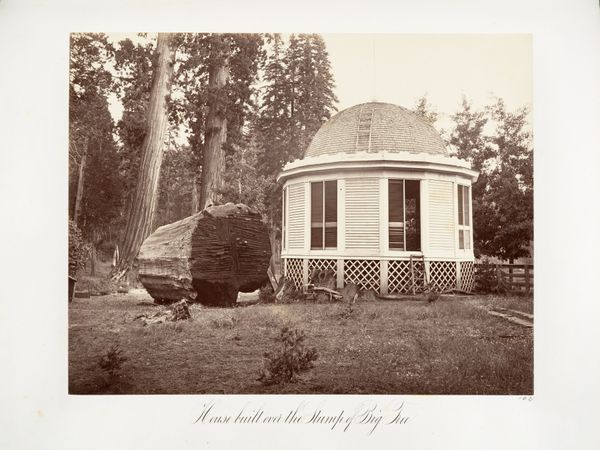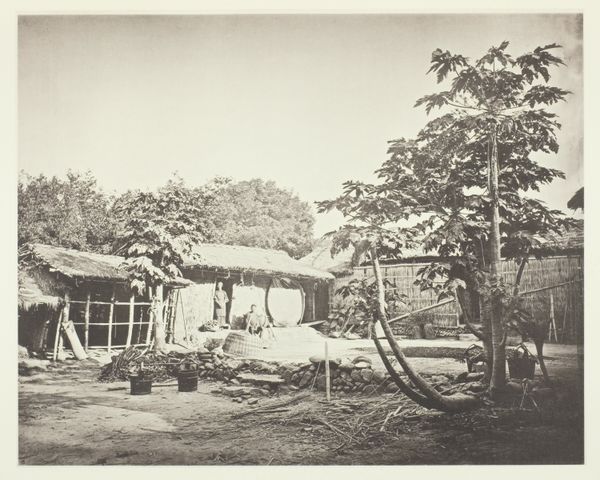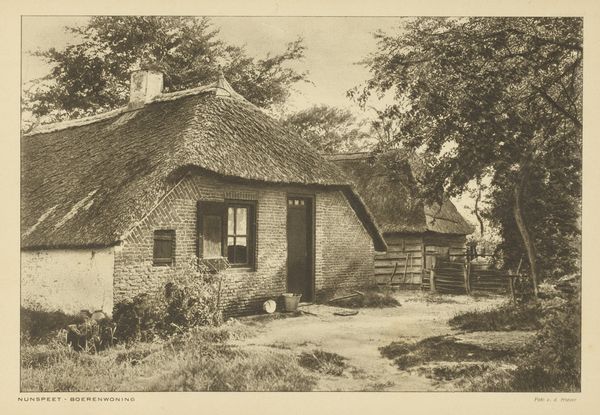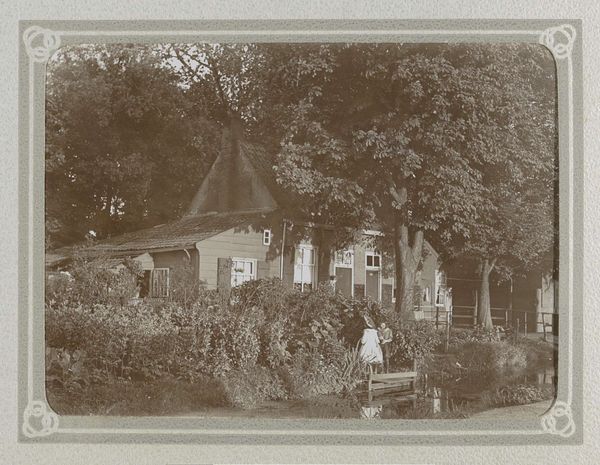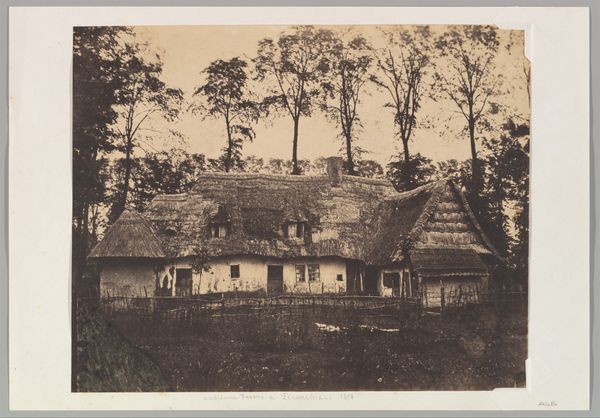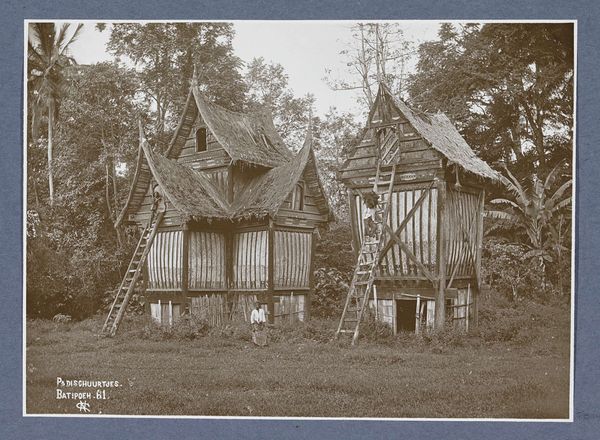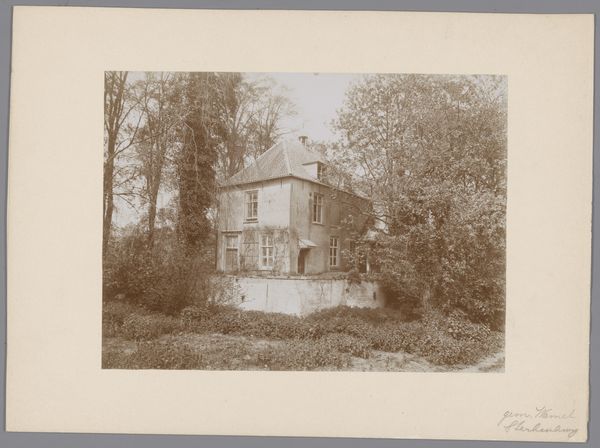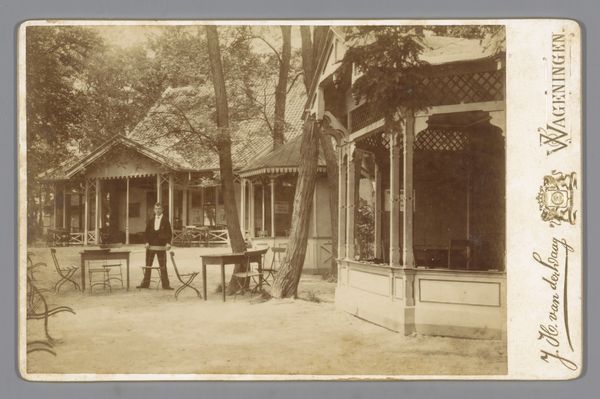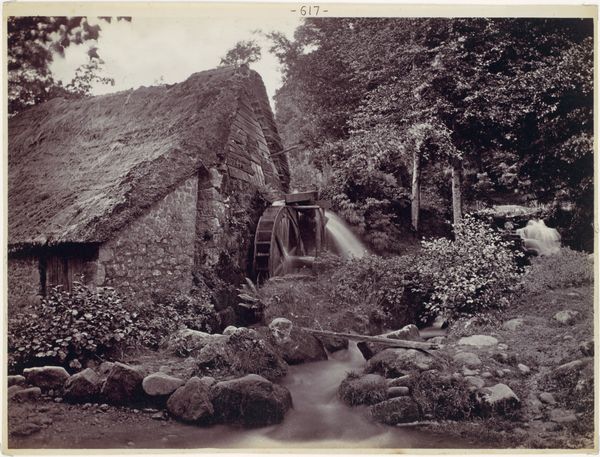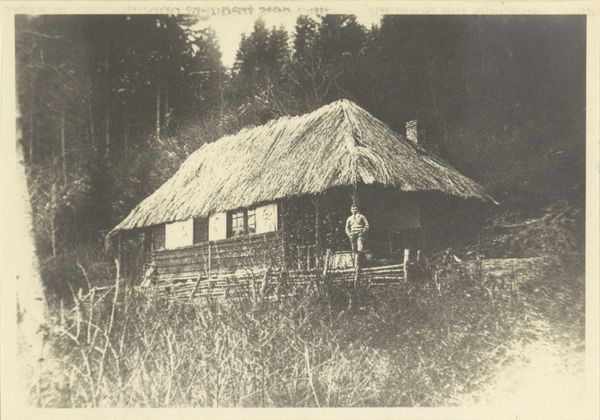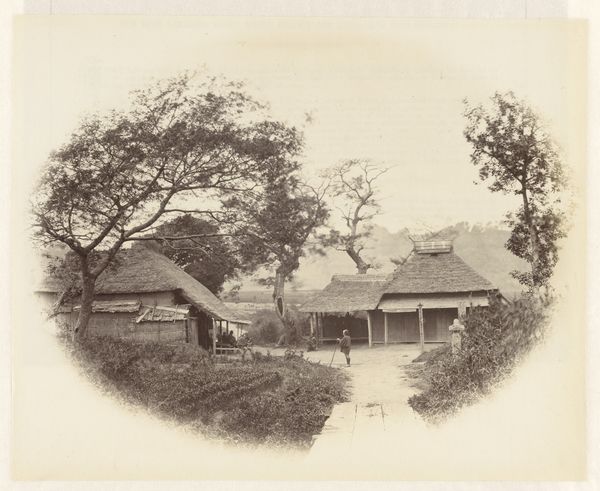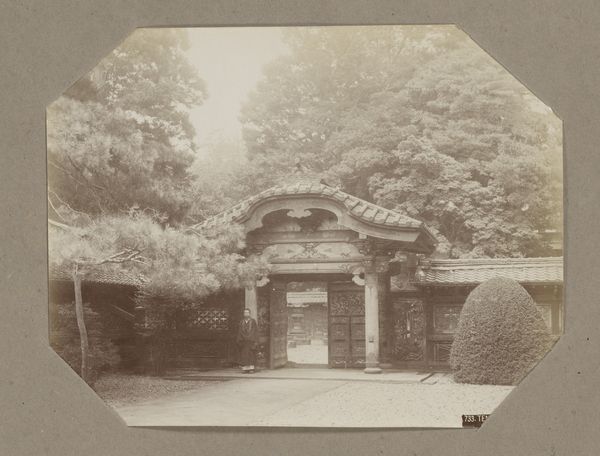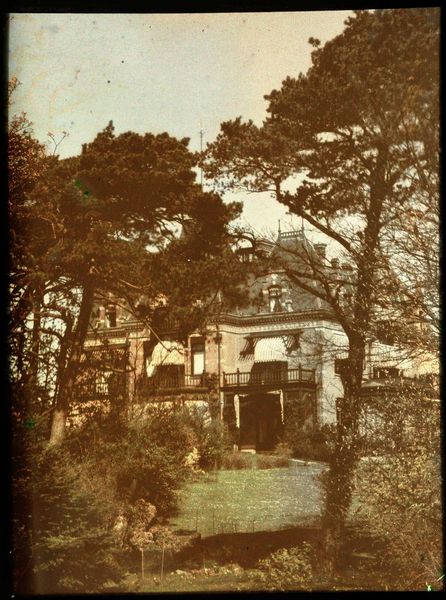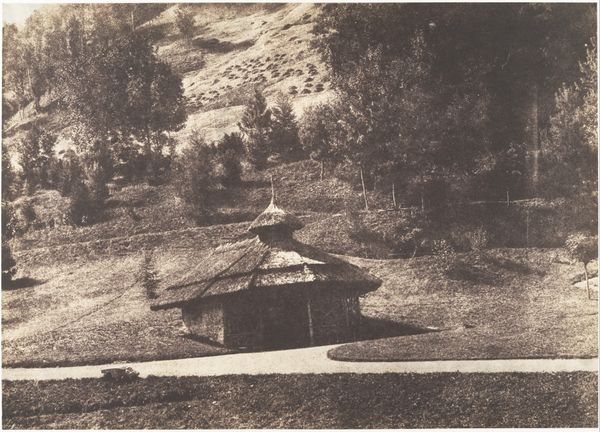
photography
#
photorealism
#
landscape
#
photography
#
realism
Dimensions: image: 27 x 33.6 cm (10 5/8 x 13 1/4 in.) mount: 38.5 x 47 cm (15 3/16 x 18 1/2 in.)
Copyright: National Gallery of Art: CC0 1.0
Curator: The quiet elegance of this secluded spot is almost palpable, isn't it? Editor: It feels melancholic to me, this photograph. Perhaps it's the tonal range of this early photographic print which accentuates a sense of bygone gentility now obscured by shadows. Curator: You're perceiving this atmospheric stillness while observing Scherer and Nabholz's photograph, titled *Gazebo in the Forest Near Moscow*, dating from approximately the 1870s? The perfectly balanced composition, framing the gazebo with towering trees, emphasizes a constructed space of leisure. Editor: Constructed certainly—but what labor went into building that whimsical structure in such a dense setting? Note the crafted, thatched roof—labor intensive. And even the columns show an attempt to appear rustic while still being distinctly built, a real tension in process. What sort of workers erected it? And what was their relationship to the place? Curator: Certainly. Considering structure though, doesn't this blend of the geometric—the round roof and cylindrical pillars—with the wildness of the forest draw a powerful contrast between culture and nature? Editor: Precisely the contrast highlights class and ownership: materials transported, crafted, assembled to dominate that space—a constructed leisure only afforded through wealth and at a distance from those processes and lives of production. The gazebo's ornamental windows remind me of the filtering gaze of privileged eyes on a picturesque landscape. Curator: You are reminding me of how art can subtly reveal unspoken social hierarchies in landscape, and I appreciate how we can read the context behind a seemingly straightforward, realist image. Editor: Exactly. Gazebos can evoke more than pretty pictures if we consider the circumstances around its design, labor, and location. It's never simply just the art object, but how that object comes to be.
Comments
No comments
Be the first to comment and join the conversation on the ultimate creative platform.
